Before you bring any new plant home, it’s a good idea to check if it’s potentially toxic to your furry friends. Here are 15 houseplants that are toxic to cats.
Some cats couldn’t care less about houseplants (my six-year-old male has zero interest in any of my plants—he prefers to chew on plastic bags). But some curious felines do like to investigate houseplants by nibbling on them!
Not all of these toxic plants are deadly to cats (although some certainly can be). But, ingesting these plants can cause your kitty to have reactions ranging from mild stomach upset to organ damage or failure.
If you have a plant chewer, or if you’re adopting a new cat, avoid keeping these poisonous plants in the house. Or, keep them out of reach of your pets by hanging them high or placing them in an area you’re sure your cat can’t reach.
Aloe Vera (Aloe barbadensis miller)
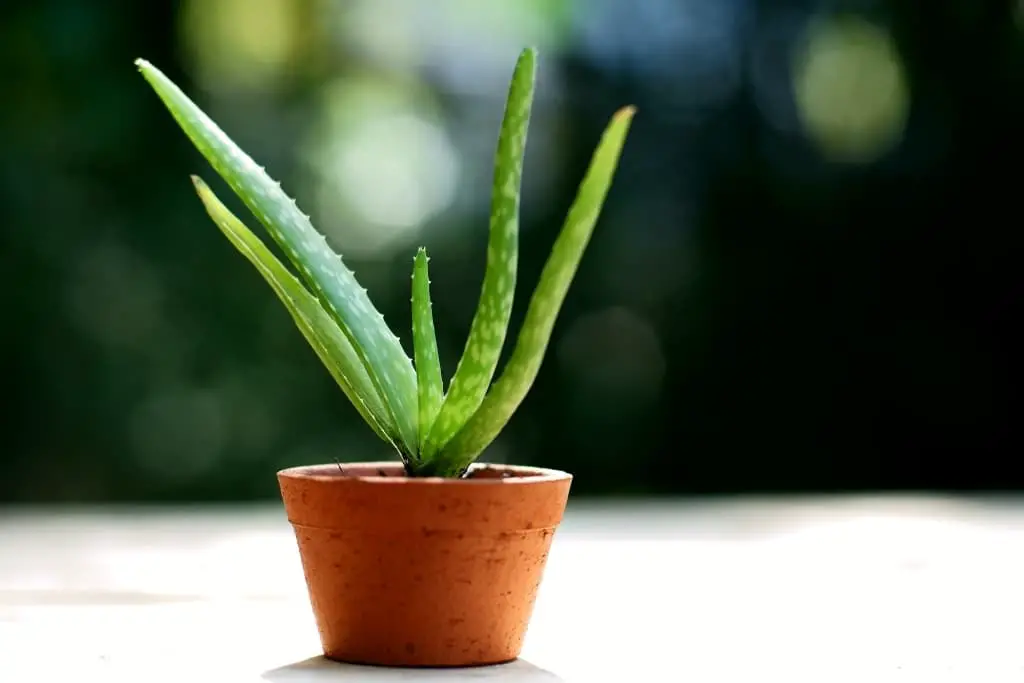
Aloe vera is well-known as a beneficial houseplant because of the healing properties of the gel within its leaves. But the white latex sap that aloe also produces can be dangerous for your cat.
Other common names of this plant:
Chinese aloe, Indian aloe, true aloe, Barbados aloe, burn Aloe, first aid plant
Toxic components in aloe vera plants:
Aloe vera plants contain saponins and anthraquinones, both of which are toxic to cats.
Potential symptoms in cats
Symptoms of aloe vera poisoning in cats may include lethargy, depression, vomiting, diarrhea, a change in urine color, loss of appetite, or tremors.
Begonia

Begonias are beloved for their beautiful flowers and foliage, but this houseplant’s juices and sap actually contain microscopic crystals that are poisonous to cats.
Which begonias are toxic to cats?
All begonia species are toxic to cats, including wax begonias, Boliviensis begonias, Reiger begonias, Rex begonias, dragon wing begonias, and cane begonias.
Toxic components in begonias:
All begonia species contain soluble calcium oxalates, which are toxic to cats. The roots of this plant have the highest concentration of calcium oxalates.
Potential symptoms in cats
Symptoms of begonia poisoning in cats may include vomiting and drooling.
Cyclamen
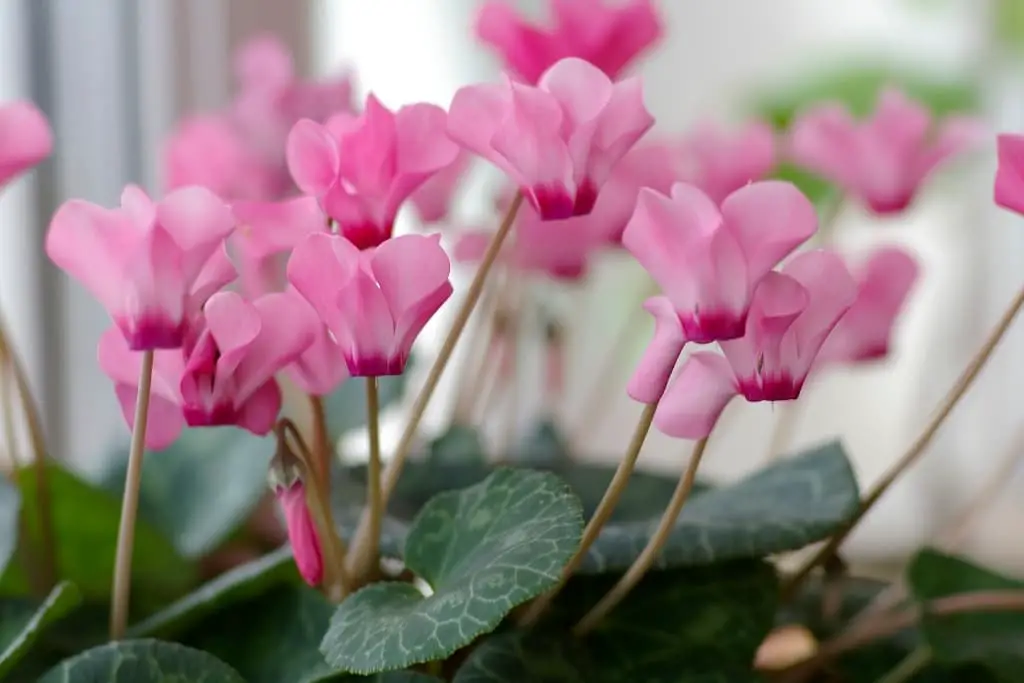
Cyclamen’s dainty pink, purple, red, or white flowers and heart-shaped leaves are beautiful, but this houseplant can be hazardous, even deadly, to your cat.
Other common names of this plant:
Sowbread, Persian violet, alpine violet
Toxic components in cyclamen:
Cyclamen plants contain cyclamine, a terpenoid saponin that is toxic to cats. The highest concentration of cyclamine is in the roots.
Potential symptoms in cats
Symptoms of cyclamen poisoning in cats may include drooling, vomiting, and diarrhea. Cats that eat large amounts of the plant’s tuberous roots may experience heart rhythm abnormalities, seizures, and even death.
Dieffenbachia
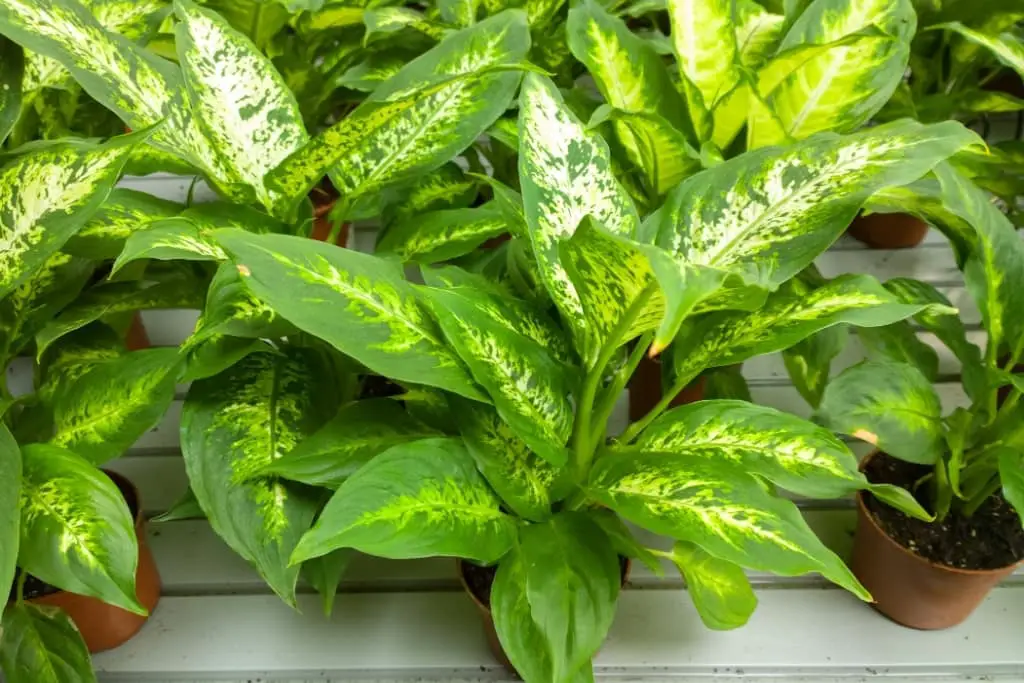
Dieffenbachia’s lush foliage and easy care make it popular to grow indoors and out. But this ornamental plant can also cause oral and stomach irritation in felines.
Other common names of this plant:
Dumb cane, dumbcane, leopard lily
Toxic components in Dieffenbachia:
Dieffenbachia plants contain insoluble calcium oxalates and proteolytic enzymes, both of which are toxic to cats.
Potential symptoms in cats
Symptoms of Dieffenbachia poisoning in cats may include burning and irritation of the mouth, tongue and lips, causing excessive drooling. Your cat may also vomit or have difficulty swallowing.
English ivy (Hedera helix)
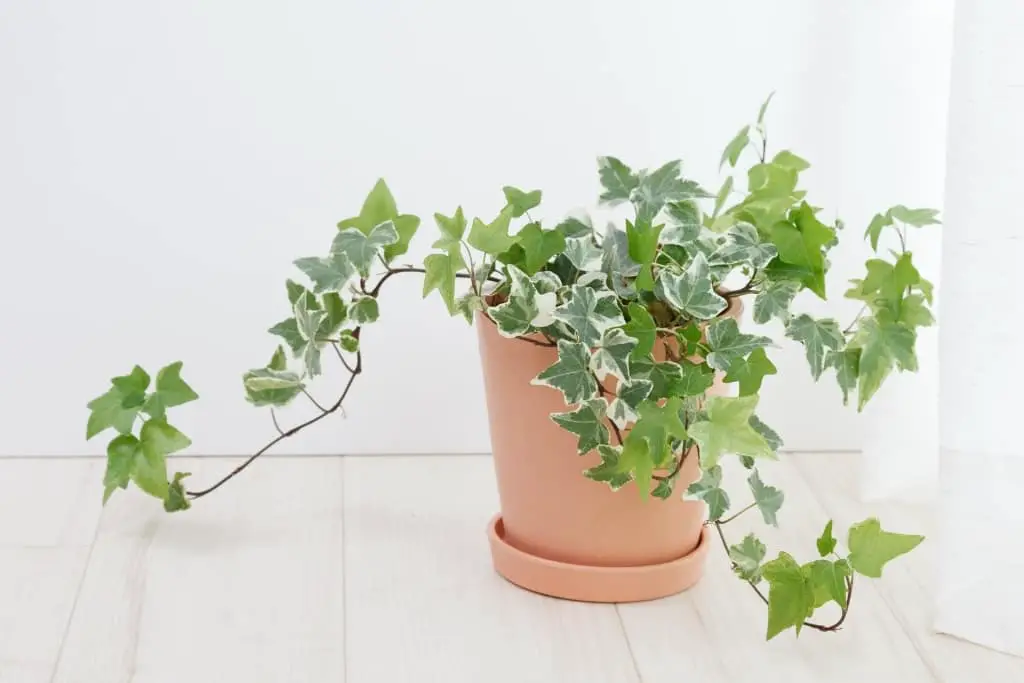
Although you’ll often find this classic plant climbing up chimneys and stone walls, English ivy is also a common houseplant. But English ivy is toxic to cats who nibble on it, causing intestinal distress and oral irritation.
Other common names of this plant:
Gum ivy, folium, ivy, true ivy, woodbind, branching ivy, glacier ivy, needlepoint ivy, sweetheart ivy, California ivy
Toxic components in English ivy:
English ivy plants contain hederagenin, a triterpenoid saponin that is toxic to cats.
Potential symptoms in cats
Symptoms of English ivy poisoning in cats may include vomiting, drooling, or diarrhea.
Jade plant (Crassula ovata or Crassula argentea)

Jade plants are thought to be lucky, but not for any cat who decides to take a bite of its fleshy green leaves! Jade plant can cause stomach upset in cats, and can even affect their mood and motor skills.
Other common names of this plant:
Lucky plant, money plant, money tree, baby jade, dwarf rubber plant, jade tree, Chinese rubber plant, Japanese rubber plant
Toxic components in jade plants:
According to the American Society for the Prevention of Cruelty to Animals, the toxin contained in jade plants hasn’t yet been identified.
Potential symptoms in cats
Symptoms of Jade plant poisoning in cats may include vomiting, depression, or a lack of coordination.
Lily (all species)
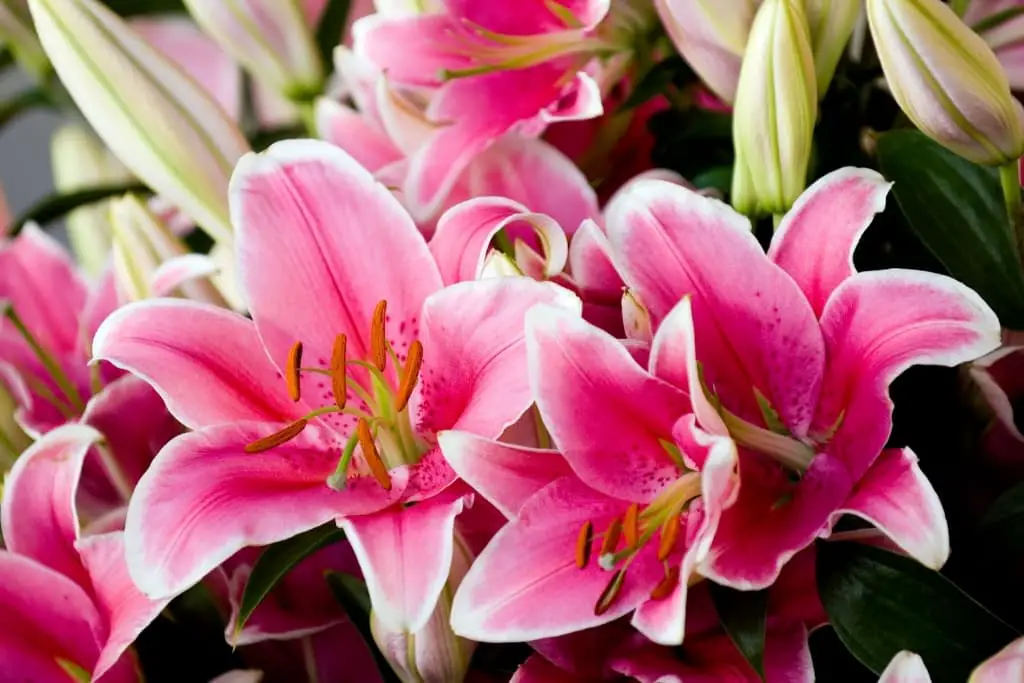
Although lilies are generally thought of as outdoor plants, you’ll often see them sold in pretty indoor containers for Mother’s Day and Easter. But beware: lilies are highly toxic and potentially fatal to cats.
Which lilies are toxic to cats?
All true lilies (Lilium and Hermerocallis genera) are toxic to cats, including Easter lilies, day lilies, tiger lilies, and stargazer lilies.
Toxic components in lilies:
According to the US Food & Drug Administration, the toxin contained in lilies hasn’t yet been identified. However, the unknown toxin occurs in the stem, leaves, flowers, and pollen of the plant. Even the water in a vase of cut lily stems is poisonous to cats!
Potential symptoms in cats
Symptoms of lily poisoning in cats may include loss of appetite, stomach pain, depression, difficulty swallowing, vomiting, and diarrhea. Lily poisoning can cause kidney damage or failure, kidney or multiple organ failure, and death.
Monstera deliciosa
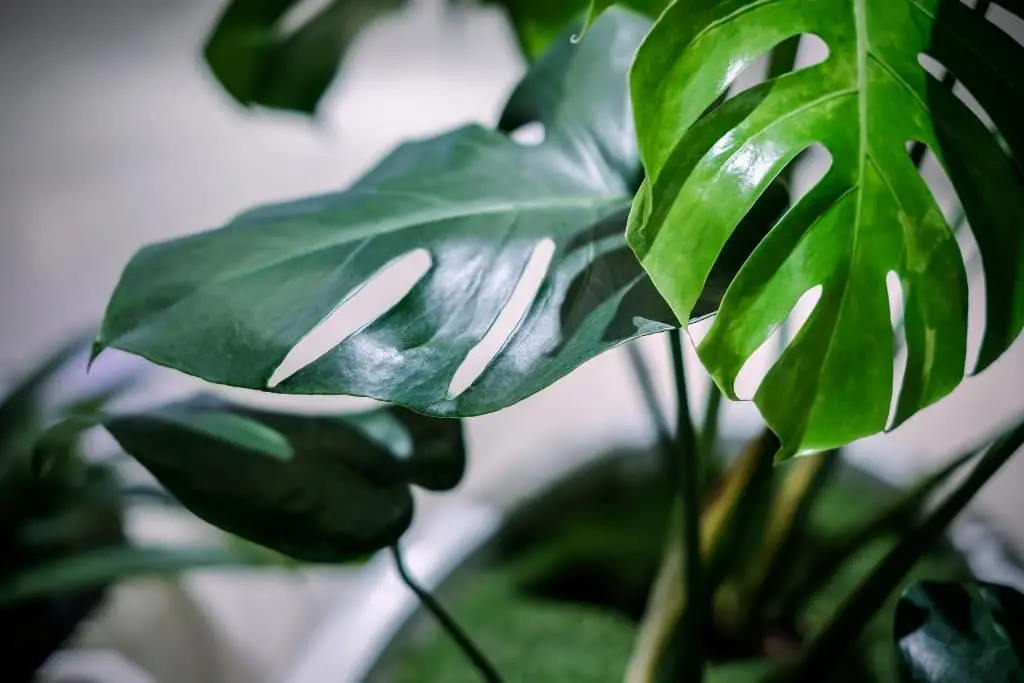
Monstera deliciosa, with its large showy leaves, has been a super-hot houseplant for the last few years. But nibbling on this popular plant can cause oral and intestinal discomfort for your cat.
Other common names of this plant:
Split-leaf philodendron, cutleaf philodendron, Swiss cheese plant, hurricane plant, Mexican breadfruit, ceriman, window leaf plant
Toxic components in Monstera deliciosa:
Monstera deliciosa contains insoluble calcium oxalates, which are toxic to cats.
Potential symptoms in cats
Symptoms of Monstera poisoning in cats may include burning and irritation of the mouth, tongue and lips, causing excessive drooling. Your cat may also vomit or have difficulty swallowing.
Peace lily (Spathiphyllum)
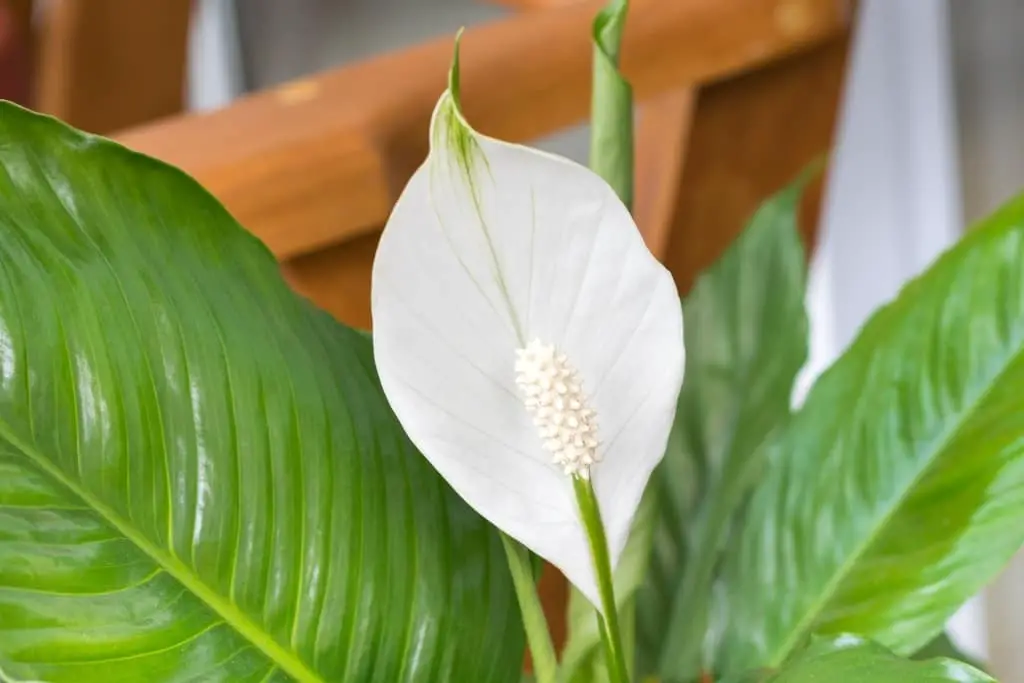
Peace lily’s creamy white flowers and glossy foliage make it a favorite décor addition for houseplant lovers. Although not actually a lily (and not as toxic as a true lily), peace lily can cause your cat to experience stomach upset and irritation of oral tissues.
Other common names of this plant:
White sails, spathe flower
Toxic components in peace lilies:
Peace lilies contain insoluble calcium oxalate crystals, which are toxic to cats.
Potential symptoms in cats
Symptoms of peace lily poisoning in cats may include burning and irritation of the mouth, tongue and lips, causing drooling. Your cat may also vomit or have difficulty swallowing.
Poinsettia (Euphorbia pulcherrima)
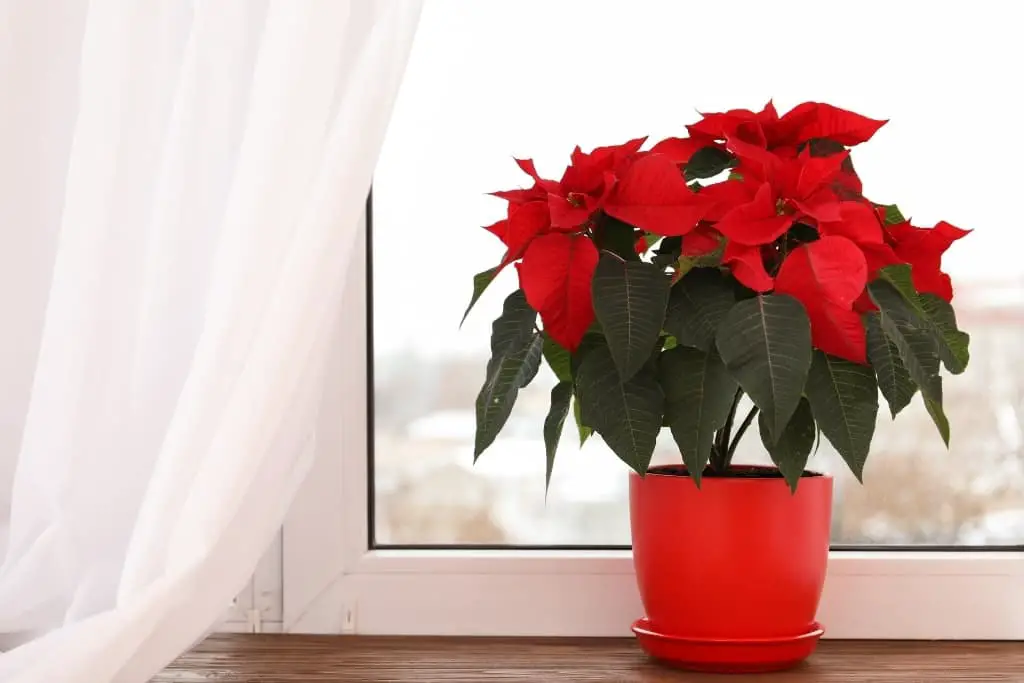
If you’ve only heard of one houseplant that’s famous for being toxic to cats, I bet it’s the cheery Poinsettia. This popular holiday plant can cause your cat to show mild symptoms of stomach or oral irritation—but likely not much worse.
Other common names of this plant:
Christmas flower, bird-of-paradise, fire on the mountain, fire plant, Mexican Easter flower
Toxic components in poinsettias:
Poinsettia plant stems contain a milky white, irritant sap. This sap contains diterpenoid euphorbol esters and saponin-like detergents which are toxic to cats.
Potential symptoms in cats
Symptoms of Poinsettia poisoning in cats may include drooling or stomach irritation, occasionally leading to vomiting.
Pothos (Epipremnum aureum or Scindapsus)
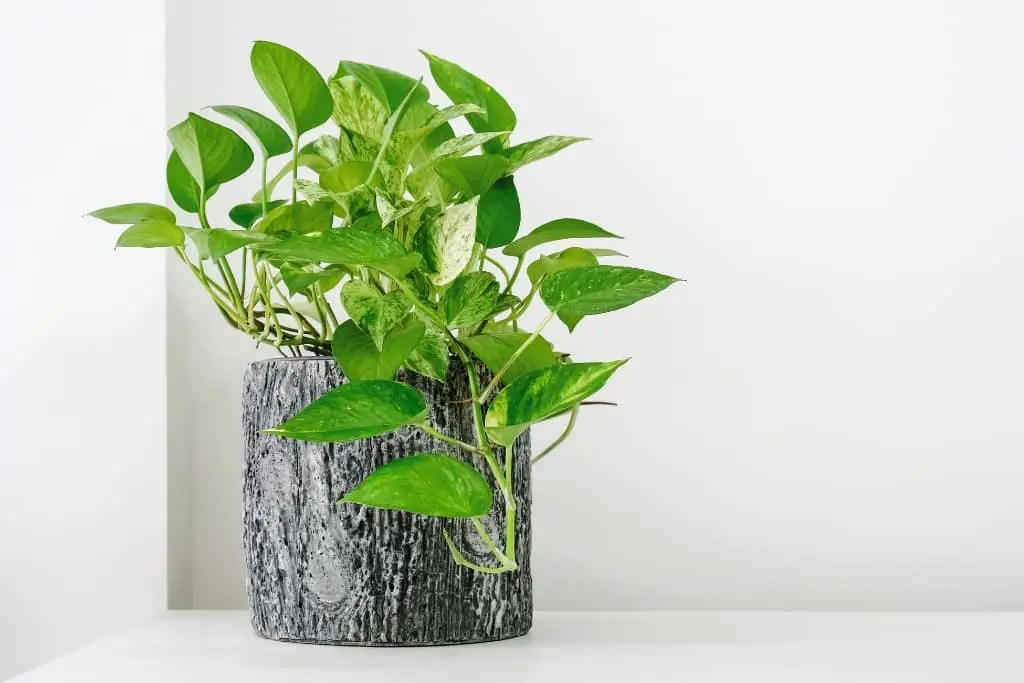
Pothos is an incredibly popular houseplant, especially because it’s such an easy-to-grow plant for beginners. But cats that nibble on this trailing plant might experience an upset stomach or irritation and swelling of the mouth and throat.
Other common names of this plant:
Devil’s ivy, Ceylon creeper, hunter’s robe, ivy arum, house plant, money plant, silver vine, Solomon Islands ivy, taro vine
Toxic components in pothos:
Pothos plants contain insoluble calcium oxalates which are toxic to cats.
Potential symptoms in cats
Symptoms of pothos poisoning in cats may include swelling and irritation of the mouth, tongue, and lips, causing drooling. Your cat may also vomit or have difficulty swallowing.
Sago palm (Cycas revoluta)
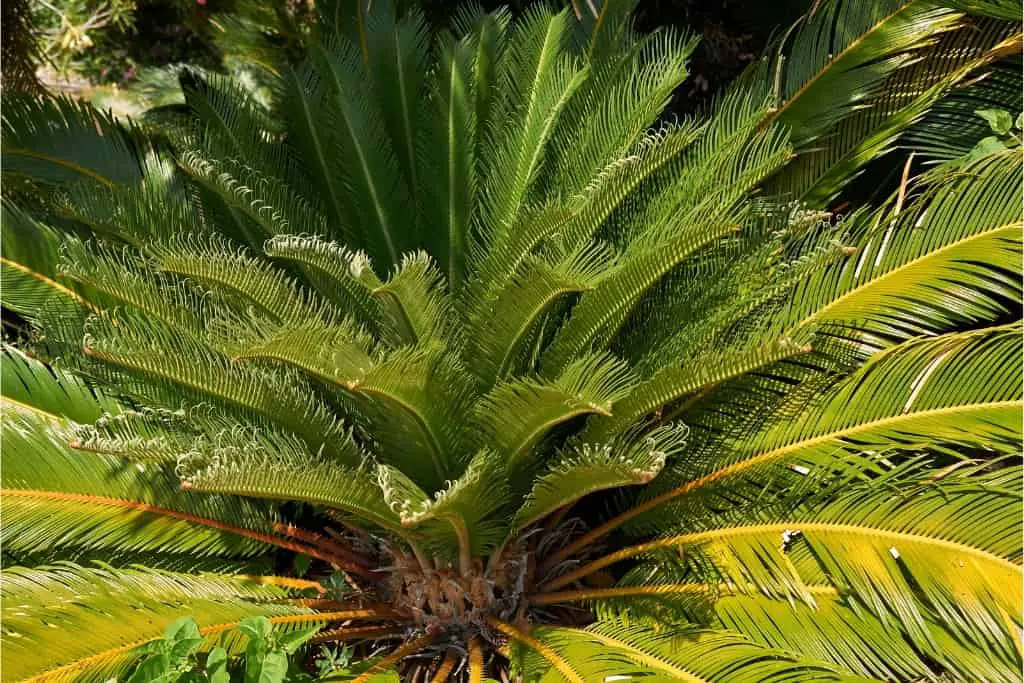
Sago palm, one of the oldest plants you can grow as a houseplant, has been around for millions of years! But this ancient species can be incredibly harmful, or even deadly to your cat.
Other common names of this plant:
Japanese fern palm, coontie palm, cardboard palm
Toxic components in sago palm:
Sago palm plants contain cycasin, which is toxic to cats. All parts of the plant are poisonous to felines, but the nut-like seeds have the largest concentration of the toxin.
Potential symptoms in cats
Symptoms of Sago palm poisoning in cats may include increased thirst, vomiting, diarrhea, or depression. seizures, Sago palm poisoning can cause liver damage, and liver or multiple organ failure, sometimes leading to death.
Snake plant (Dracaena or Sansevieria trifasciata)

The jaunty snake plant is an easygoing, low-maintenance plant that can really jazz up a darker corner of your home—snake plants can tolerate low light very well. But snake plants can also cause intestinal distress in your cat!
Other common names of this plant:
Mother-in-law’s tongue, Saint George’s sword, viper’s bowstring hemp, golden bird’s nest, good luck plant
Toxic components in snake plants:
Snake plants contain saponins, which are toxic to cats.
Potential symptoms in cats
Symptoms of snake plant poisoning in cats may include vomiting or diarrhea.
Umbrella plant (Schefflera arboricola)
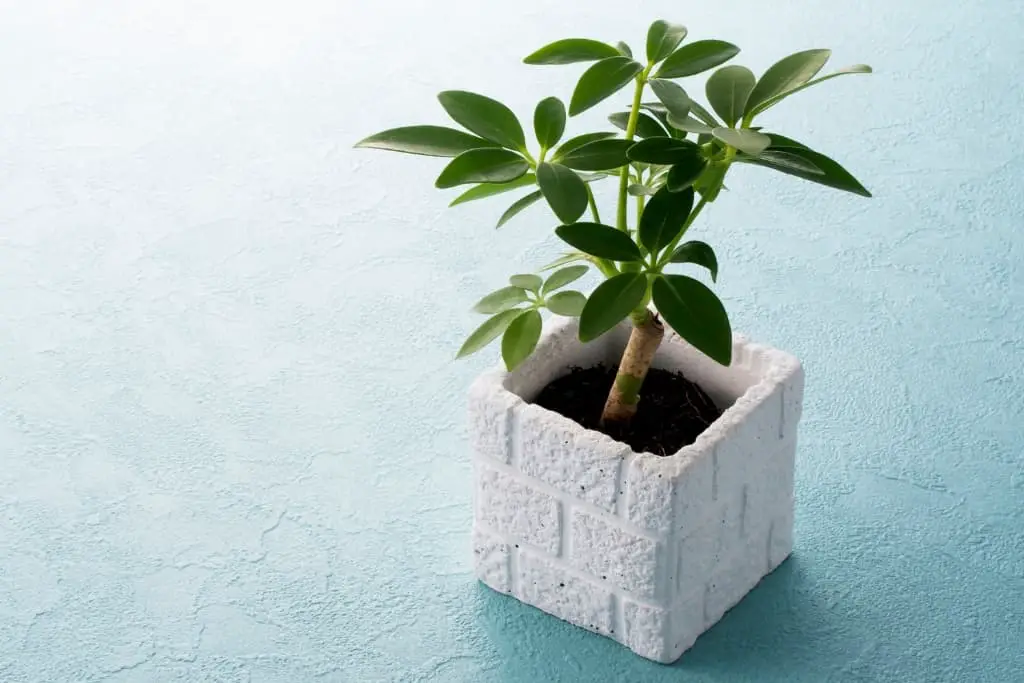
Umbrella plants, named for their unique parasol-shaped leaf arrangement, is a hardy, robust plant native to Taiwan. This fast-growing shrub is said to remove toxins from the air—but the umbrella plant can be harmful to your cat.
Other common names of this plant:
Australian ivy palm, umbrella tree, octopus tree, starleaf
Toxic components in umbrella trees:
Umbrella trees contain serpenoids, saponins, and insoluble oxalates, all of which are toxic to cats.
Potential symptoms in cats
Symptoms of Schefflera poisoning in cats may include mild vomiting or diarrhea.
Yucca (Yucca filamentosa)
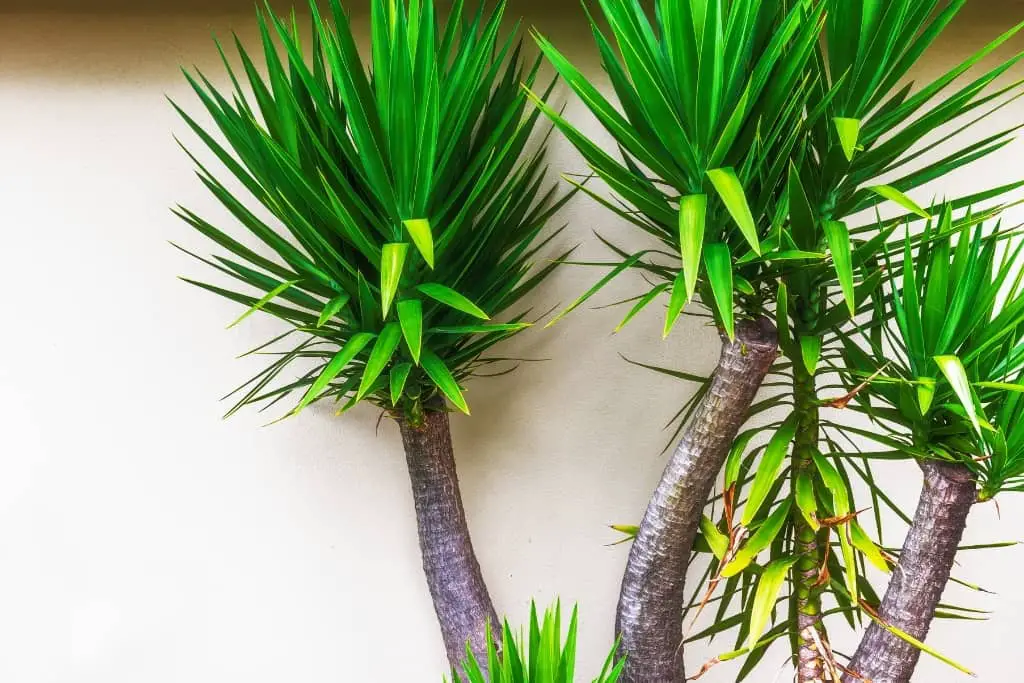
Yucca plants’ palm-like appearance and easy care can create a tropical vibe in your home with little maintenance. However, curious cats can end up with very upset tummies if they decide to munch on some yucca leaves!
Other common names of this plant:
Adam’s needle, Spanish bayonet, Spanish dagger, soapweed
Toxic components in yucca plants:
Yucca plants contain saponins, which are toxic to cats.
Potential symptoms in cats
Symptoms of yucca poisoning in cats may include vomiting or diarrhea.
What to do if you suspect your cat ingested part of a toxic houseplant
If you think (or know) that your cat ate part of a toxic houseplant, immediately contact your pet’s veterinarian or the closest emergency vet.
If you’re in the US, it’s also a good idea to have the ASPCA’s Animal Poison Control Center phone number handy: (888) 426-4435. The center is staffed 24 hours a day with veterinarians and support staff.
They do charge a consultation fee for using this service, which is $65 at the date of publication.
Tip: Save this number in your phone right now, so you’ll have it handy in case of an emergency. ASPCA Animal Poison Control Center: (888) 426-4435
If you’re not sure if a houseplant you own (or are considering buying) is toxic to cats, the ASPCA maintains a searchable list of toxic and non-toxic plants.
Pin this to save for later!
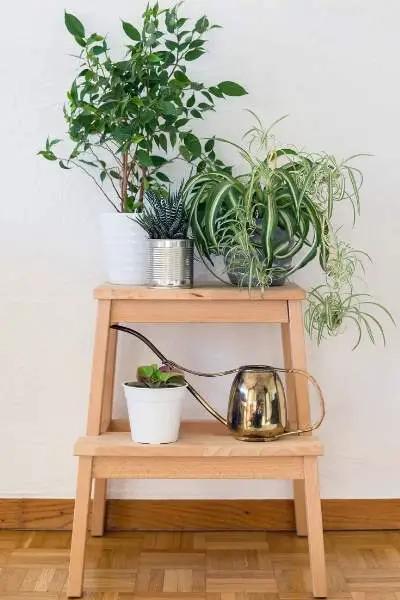
GET A FREE PLANT CARE TRACKER!
Sign up for the Leafy Little Home newsletter, where we share plant tips and inspiration to turn your space into a green oasis. Plus, we'll send you a handy printable Plant Care Tracker, absolutely free!
By signing up you agree to receive the Leafy Little Home newsletter. Unsubscribe at any time.
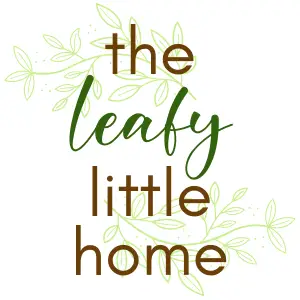
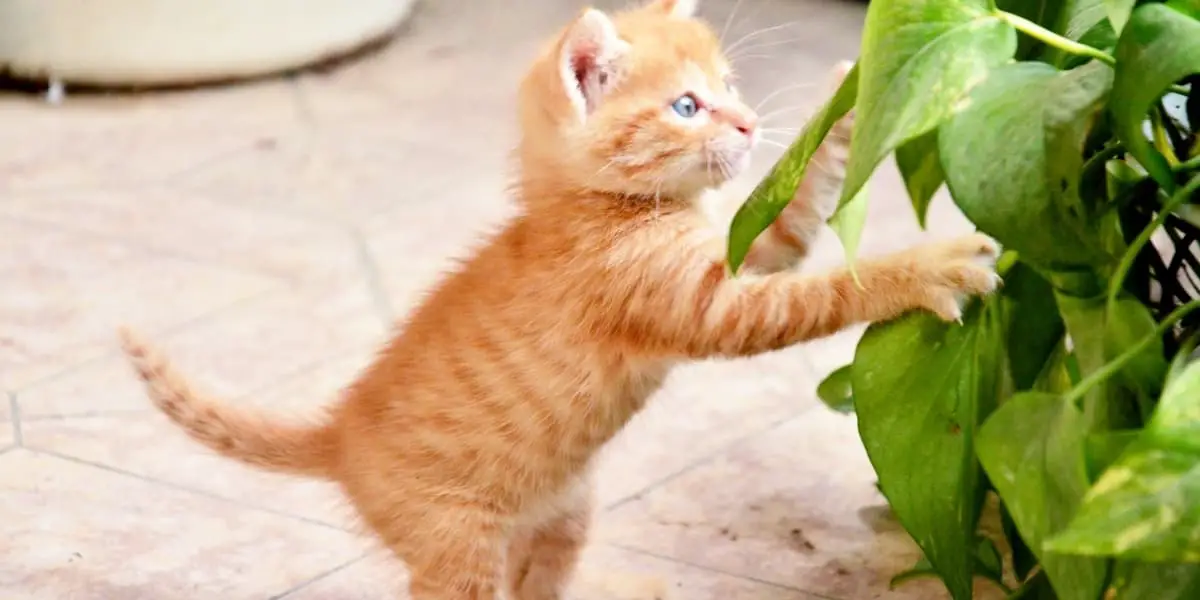
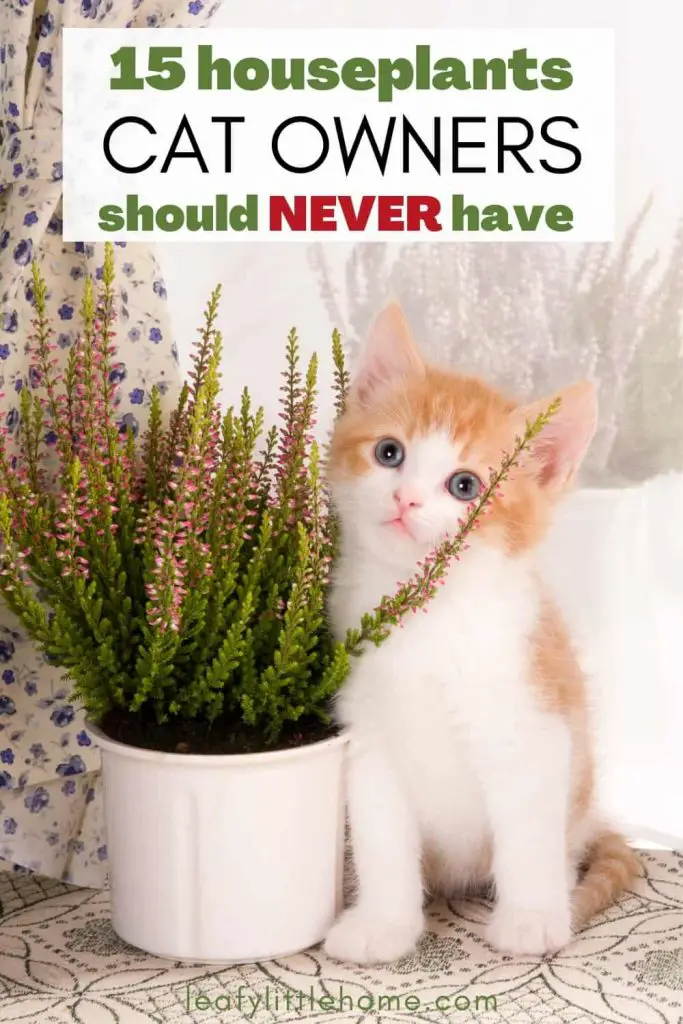
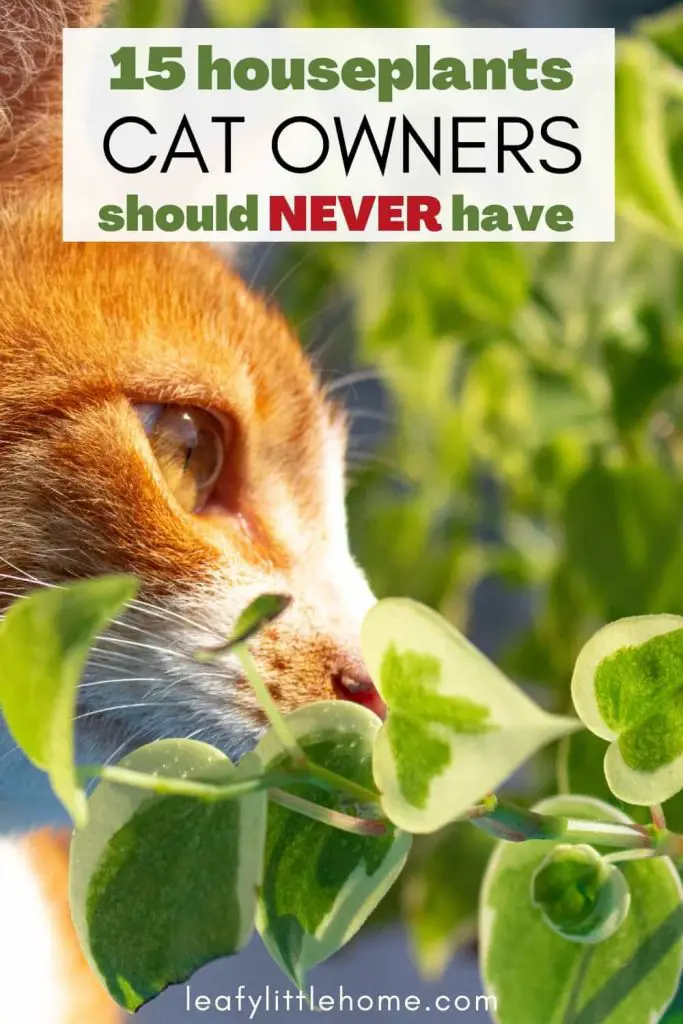
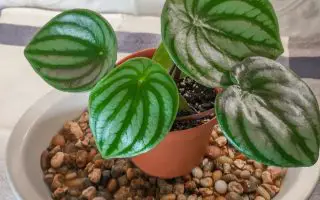
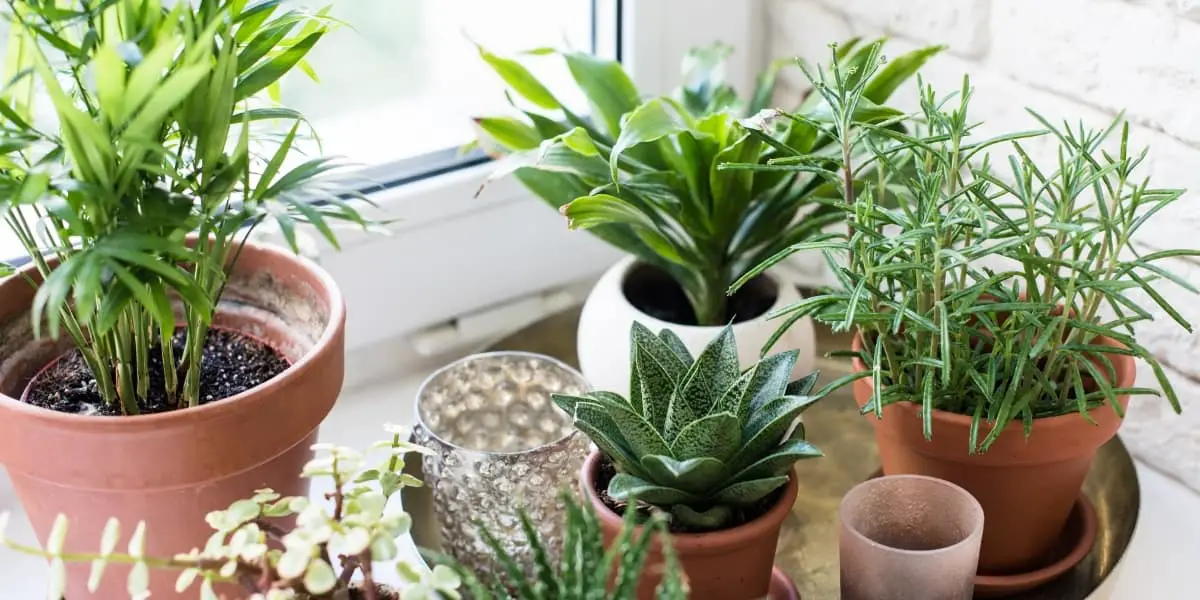
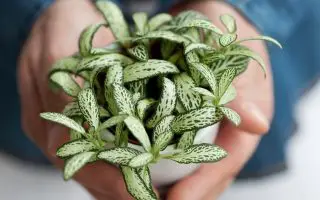
Oh, Wow! I didn’t know this! This is very informative and helpful. Thank you!
Hi Christine, glad I could help – thanks for reading!
OMG I didn’t know about aloe vera? Oopsy! Thank you so much for sharing.
Hi Angela, lots of people are surprised that there are several common houseplants, like aloe, that can make kitties sick if they eat them!
We don’t have any pets, but for those that do this will be very helpful for sure.
Hi Melanie, thanks for reading! It’s always helpful to keep in mind if you’re buying a plant gift for a friend who has a cat.
There are so many popular plants on this list! It makes it hard as a cat owner, to have any plants! I got rid of all of my plants except one.
Wow, this is important information! I’m sure many cat owners have no idea so many common houseplants can be toxic. I’ll be sharing this article for sure!
I’m so glad you’re sharing this list of common houseplants that are poisonous for cats. Since I have cats I gave up on plants long ago.
Hi Cindy, it’s so important that cat lovers know which plants are toxic to cats – but there are lots that are safe! If you ever decide to get houseplants again, spider plants, peperomias, and Boston ferns are all cat-friendly options :)
what a great list! I have been avoiding houseplants because I have both dogs and cats in the house, and especially my cat likes to chew on everything. I am not taking any chances, no matter how much I would like to have some plants indoors. Blessings!
Hi Claudia, thanks for reading! Yes, if your cat chews on everything it’s probably a good idea to avoid houseplants he can reach. Maybe try some cat-friendly plants in hanging planters?
I never knew about any type of plant being toxic to cats. Thank you for sharing this. We don’t have any cats but I have friends that do and they have houseplants also. Will pass this along to them.
Hi Ashley, thanks for spreading the word! There are several plants on this list that many people don’t know are toxic to cats.
Oh I did not know this. Very important coz you keep a pet cat at home and then better not to harm the little creature by planting these houseplants.
Hi Kuntala, I agree that we need to provide our pets with a safe environment. Knowing which plants can be toxic to pets is so important!
This is so important to know as a cat owner! Thank you so much for putting this together for us so we can keep our fur babies safe <3
Hi Sara, thanks so much for reading! I know most cat owners will agree that making sure our homes are safe for our kitties is critical to their health and happiness.
Oh I didn’t know this until now! Thank you for sharing this informative post, I will share this with my cat-lover friends.
Hi Dianne, glad you enjoyed the post and thanks for spreading the word to your friends! :)
Wow….I didn’t expect to hear that the sap from aloe vera is on this list, too! I honestly thought it was harmless.
Hi Ntensibe, yes, the white, milky latex sap is toxic to cats. The green gel that people often use for their skin and hair is harmless, though!
I was not aware at all that some houseplants are toxic to cats. But there are so many as you have mentioned. Really helpful info!
Hi Monidipa, glad I could help! I love cats and I know lots of people don’t realize what plants can be toxic to them.